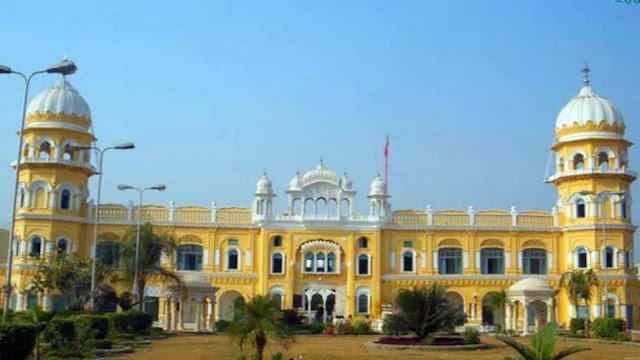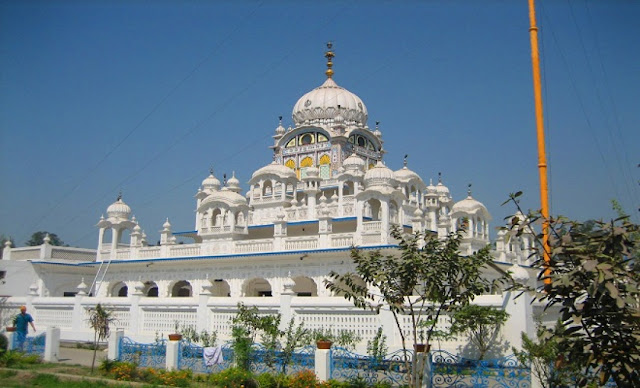Nankana Sahib, was established by the first Guru, Guru Nanak Dev, in Punjab, Pakistan.
Nankana Sahib,Punjab , Pakistan
Nankana Sahib, home to many gurdwaras for Sikhs, is the site of the birth of Guru Nanak, the founder of Sikhism, on 15 April 1469. The gurdwaras in Nankana Sahib each mark a significant event in the life of the Guru, the most famous being Janam Asthan, which marks the exact place of his birth. The list of Gurdwaras in Nankana Sahib follows: Gurdwara Janam Asthan; Gurdwara Patti Sahib; Gurdwara Bal Lila; Gurdwara Kiara Sahib; Gurdwara Malji Sahib; Gurdwara Tambu Sahib; and Gurdwara Chhati Patshahi.
Since the partition of India in 1947, it has been difficult for Sikhs to come to Nankana Sahib from India to pray in the gurdwaras. As late as the 1980s, the gates of the gurdwara remained closed to worshippers, but since then daily services have been held and bani recited. Recently, i.e. within the last two weeks, the Guru Granth was installed in the Gurdwara Chhevin Patshahi in Nankana Sahib, leaving only the Gurdwara Kiara Sahib without the sacred text. With this change, Sant Singh Sdil was appointed as the Granthi of the shrine, who now not only chanted hymns but conducted the daily services. And over 2,000 Sikhs from India participated in the Baisakhi festival in Lahore and visited the Gurdwara Janam Asthan while in Pakistan. Although it has been difficult for Sikhs to hold their worship services and make pilgrimages to the Gurdwaras, the future looks bright for them as Pakistan is allowing Sikhs from Pakistan and India to visit their holy places.
Gurdwara Janam Asthan, also called Gurdwara Nankana Sahib, is a highly revered gurdwara located at the place where the founder of Sikhism, Guru Nanak, was born. The shrine is located in the town of Nankana Sahib, near the city of Lahore in the Punjab province of Pakistan. The gurdwara is part of an ensemble of nine important gurdwaras in Nankana Sahib. The shrine is frequently visited by Sikh yatris as part of a pilgrimage route in Pakistan. The Gurdwara complex is on the list of protected monuments of the Department of Archaeology, Government of Punjab.




Comments
Post a Comment